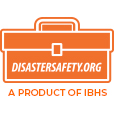Winter weather causes slippery conditions, structural damage to buildings from excessive snow loads, water damage from frozen pipes, and can create dangerous ice dams on the roof. Here are nine ways you can prepare your home for the winter season.
1. Assess your home’s exposure and know what to do

Create a plan for your home before and after a winter storm.
Regional differences exist between homes located in the northern US and those in the southern regions. Older homes, especially homes in the south, may be more susceptible to below freezing temperatures and are more likely to not have adequate pipe or attic insulation.
2. Prevent plumbing from freezing
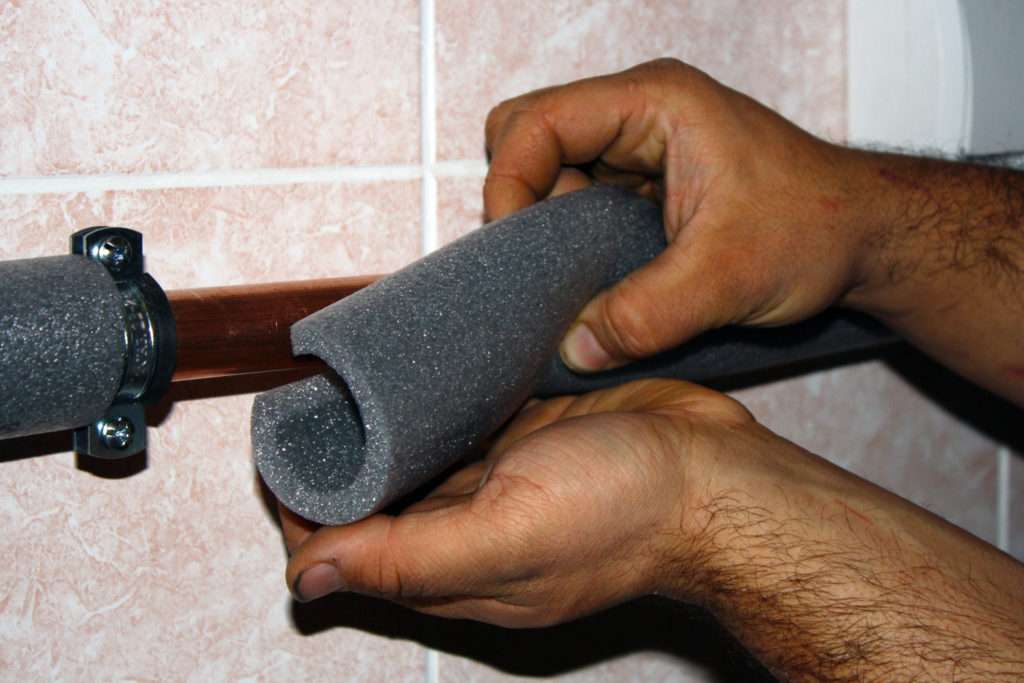
- Insulate and seal attic penetrations such as those for, vents or plumbing, and anywhere piping or wiring penetrates an exterior wall.
- Make sure your pipes are insulated in hard-to-reach places like attics, crawl spaces and along all outside walls. Using the specifically designed pipe insulation, wrap the pipes and faucets in unheated or minimally heated areas.
- Caulk and seal the exterior of your home around windows and doors.
- Add weatherstripping as needed around doors and windows, making sure you cannot see any daylight from inside your home.
- Temporarily cover any ventilated crawl spaces of your home.
3. Winterize your landscaping and irrigation

- Keep all tree limbs trimmed and away from your house. Trees with branches near or hanging over your house can damage your roof, siding, and windows.
- Shut down your pool and sprinkler system. Drain outdoor faucets, irrigation system and hoses.
- If you don’t have frost-proof outdoor faucets (homes built before 2010 typically do not), turn off the shut-off valve for outdoor faucets inside your home or cover them from the outside.
4. Tune-up your home’s heating system
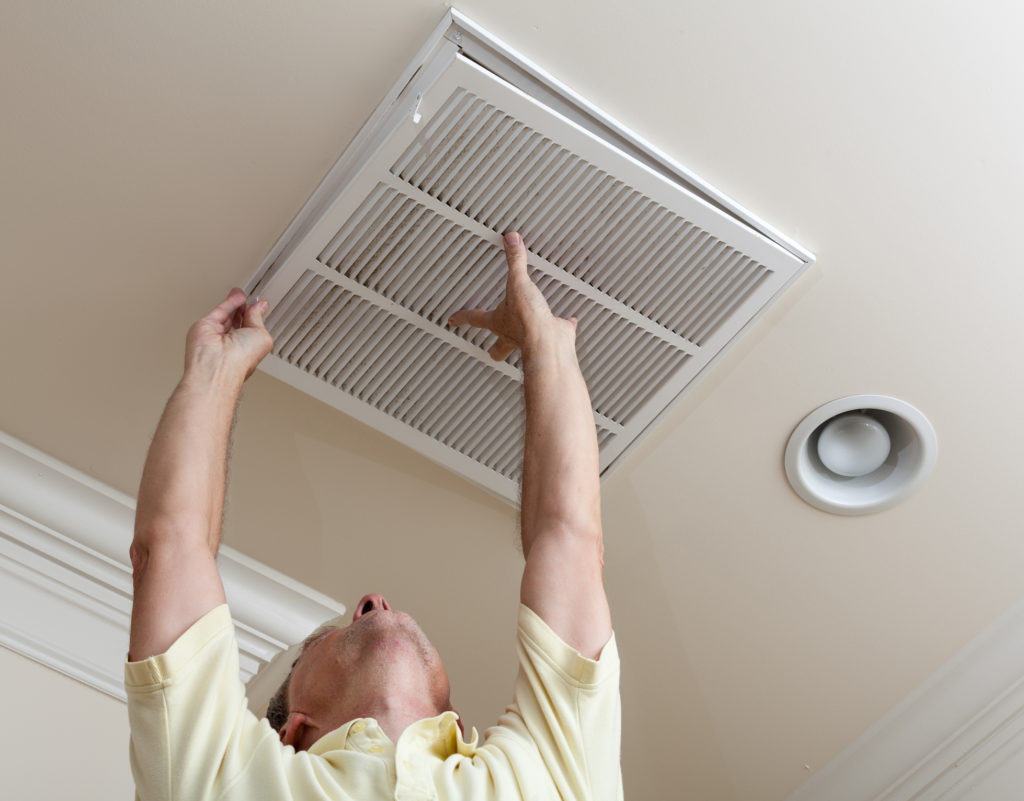
- Schedule preventative maintenance and make sure the system is operating properly and efficiently. You don’t want to be last in line for repairs on the coldest day of the year, which could cause frozen pipes.
- The technician should change out any air filters, ensure the system can achieve its manufacturer-rated efficiency, and check that exhaust gases are being ventilated properly.
5. Prevent roof leaks and ice dams
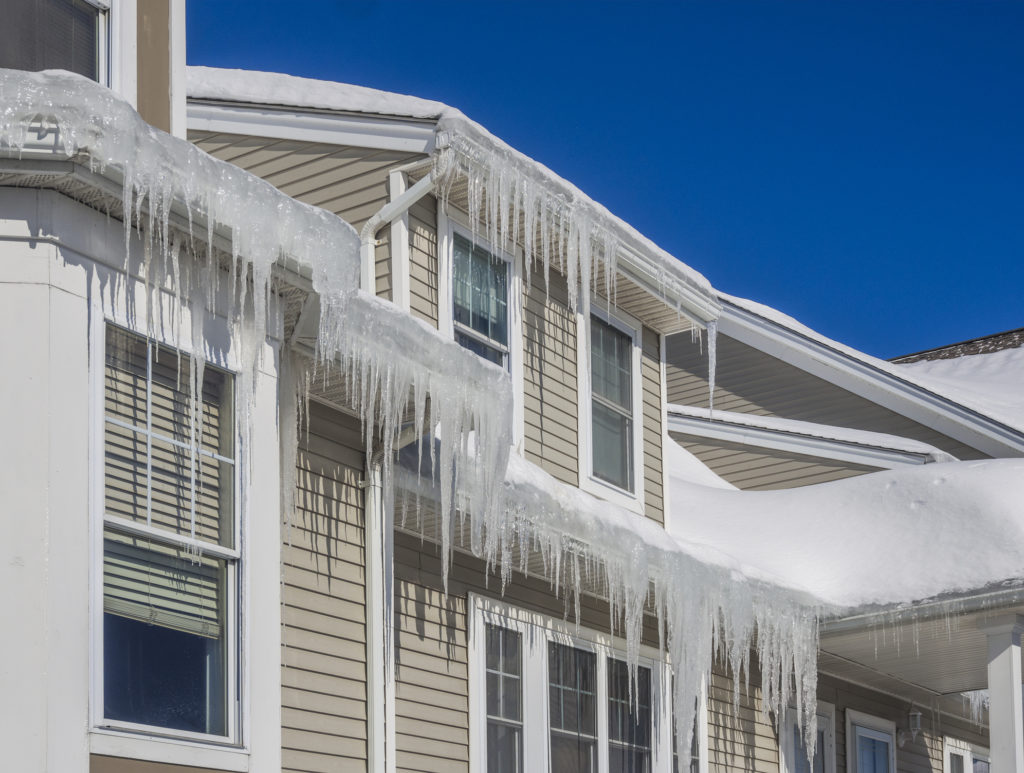
Schedule a roof inspection ahead of winter weather, especially in areas with harsh winters, so you’re not left scrambling when a big storm hits and your roof starts leaking. If there are minor issues they can help solve them before they turn into larger issues and potentially avoid unexpected costs. Inspections whether you’re hiring someone or doing the inspection yourself should focus on the following key areas:
Roof:
- Inspect roof for age or damage and repair leaks before winter season.
- Secure loose shingles.
- Check and repair any gaps or broken seals around vent stacks, chimneys and corners of the roof.
- Look for missing or damaged fascia boards and repair/replace them.
Gutters & Drainage:
- Inspect gutters and ensure they’re secured to the home.
- Keep all drains, gutters, and downspouts free of yard debris that may restrict proper flow.
- Route downspouts to divert water at least 3 to 4 feet away from the foundation.
Attic:
- Ensure you have adequate insulation in your home’s attic with proper ventilation.
- Insulate all penetrations to the attic and attic access doors.
6. Clean your chimney
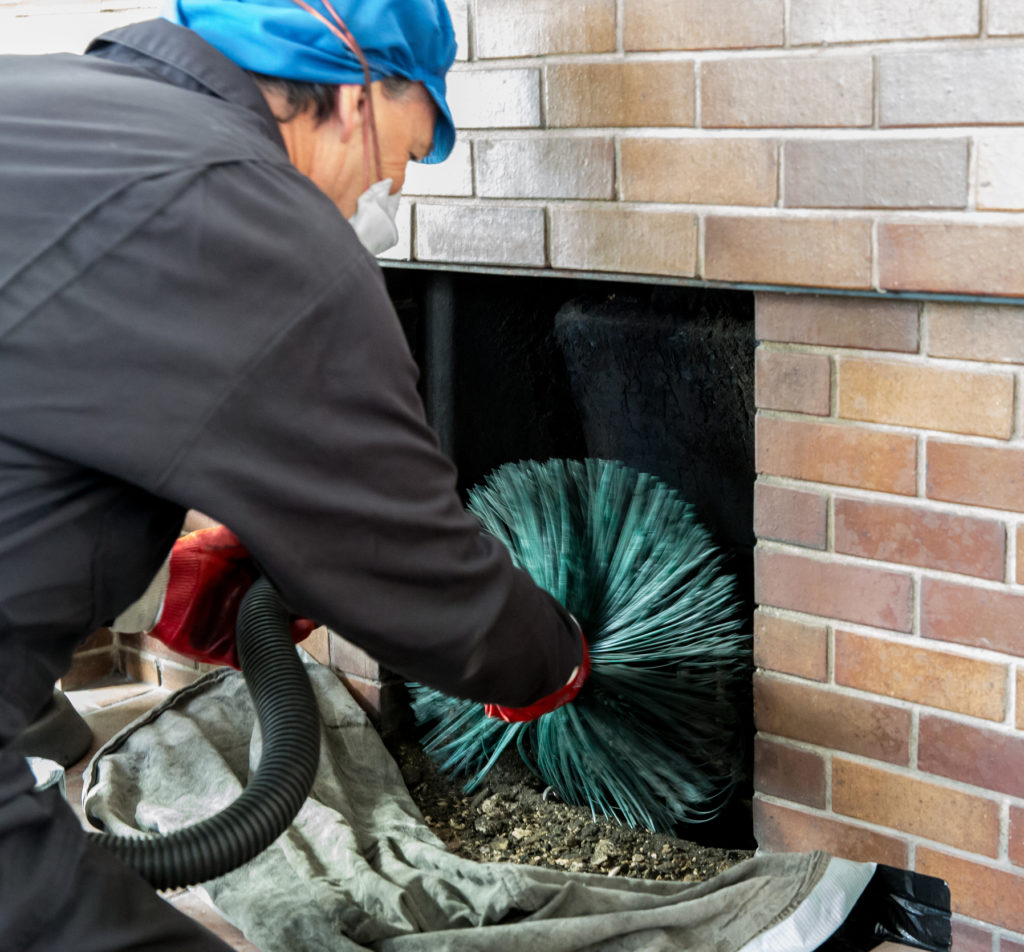
- Call a chimney sweep to clean it out annually. This will prevent chimney fires and prevent carbon monoxide from building up in your home.
- When not in use, close the damper to avoid warm air escaping up the chimney.
7. Install and maintain smoke and carbon monoxide detectors

Installation:
- Smoke Detectors:
- Install them inside of every bedroom, outside of all sleeping areas, and on every floor of a home (including your basement and attic).
- Smoke alarms should be interconnected. When one sounds, they all sound.
- Make sure smoke detectors are installed high on the walls (12 inches from the ceiling) or near the center of the ceilings, and at least 10 feet away from cooking appliances. Smoke rises so smoke alarms will be most effective with this placement.
- Carbon Monoxide Detectors:
- NFPA recommends to install them inside of every bedroom, outside of all sleeping areas, on every floor of a home, and in other locations where required by applicable laws, codes or standards. Also, include a detector near an attached garage, in case a car is left running.
- Detectors should be interconnected. When one sounds, they all sound.
- Follow the manufacturer’s instructions for placement and mounting height.
Maintenance:
- Maintain smoke and carbon monoxide detectors to help ensure your home is protected 24/7.
- Test at least once a month
- Change the batteries every six months
- Replace them every 10 years, or when the manufacturer recommends
8. Service your generator in case of power outages

- Proper maintenance is critical to avoid the failure of a generator when it’s needed most. The time to maintain a generator is well before a major storm or disaster strikes (when professional assistance may be unavailable, power lines are down, and access roads are blocked).
- Set a maintenance plan for your specific model by checking the owner’s manual, which should tell you:
- When to check and change the oil
- When to replace the spark plug and air filter
- When to clean the spark arrestor screen
- How often to run the generator, which is usually every couple of months
- How to store the generator, usually in a dry place
9. Check your insurance coverage and create an inventory

- Know what your insurance covers and what it doesn’t.
- Keep your insurance agent’s contact in your phone.
- If you have a loss due to a winter-related event, you’ll have to itemize your losses for your insurance company. Take a complete inventory of your home and store it somewhere safely offsite.
